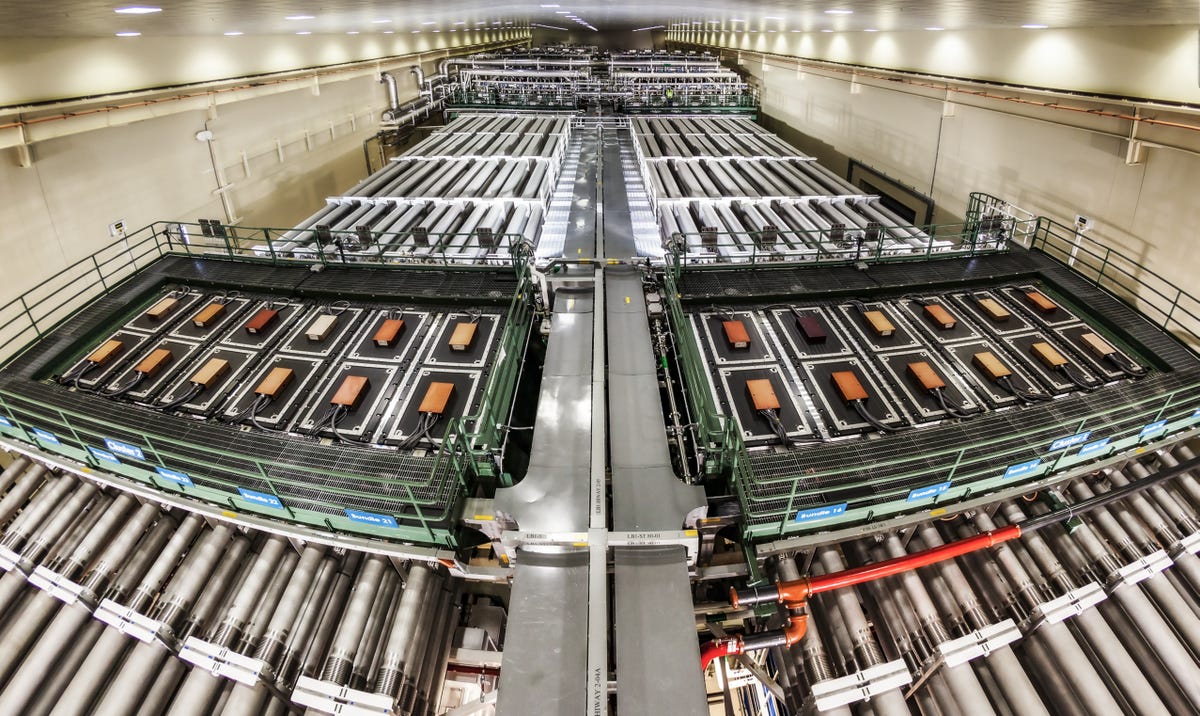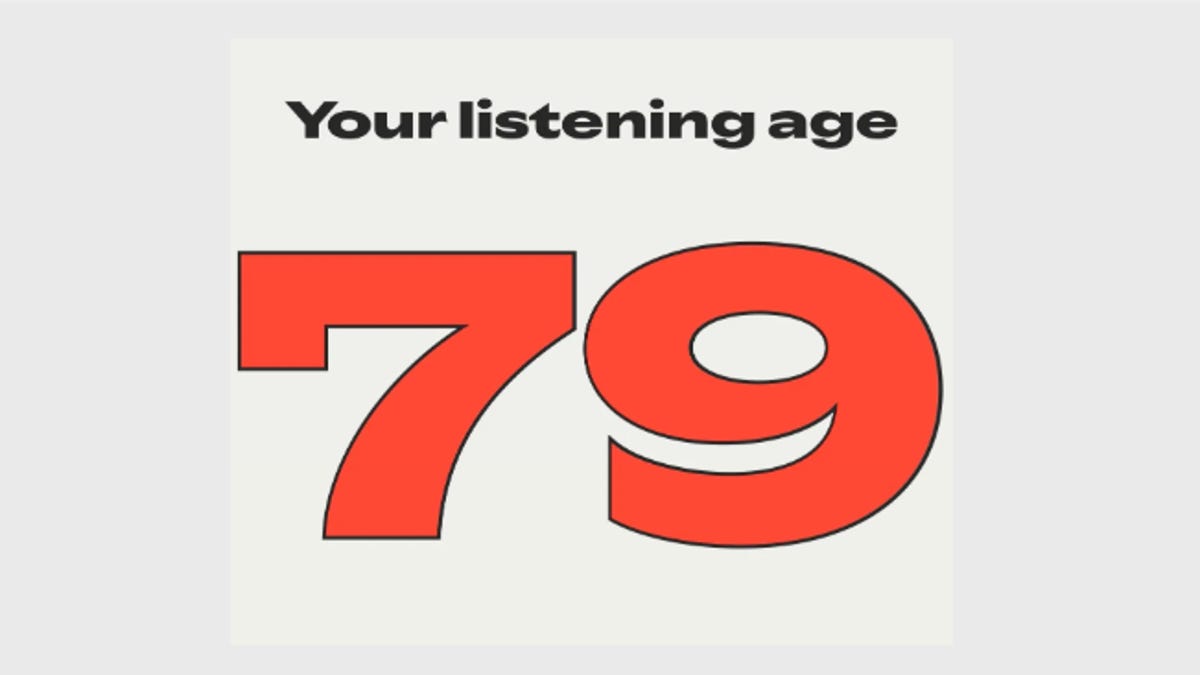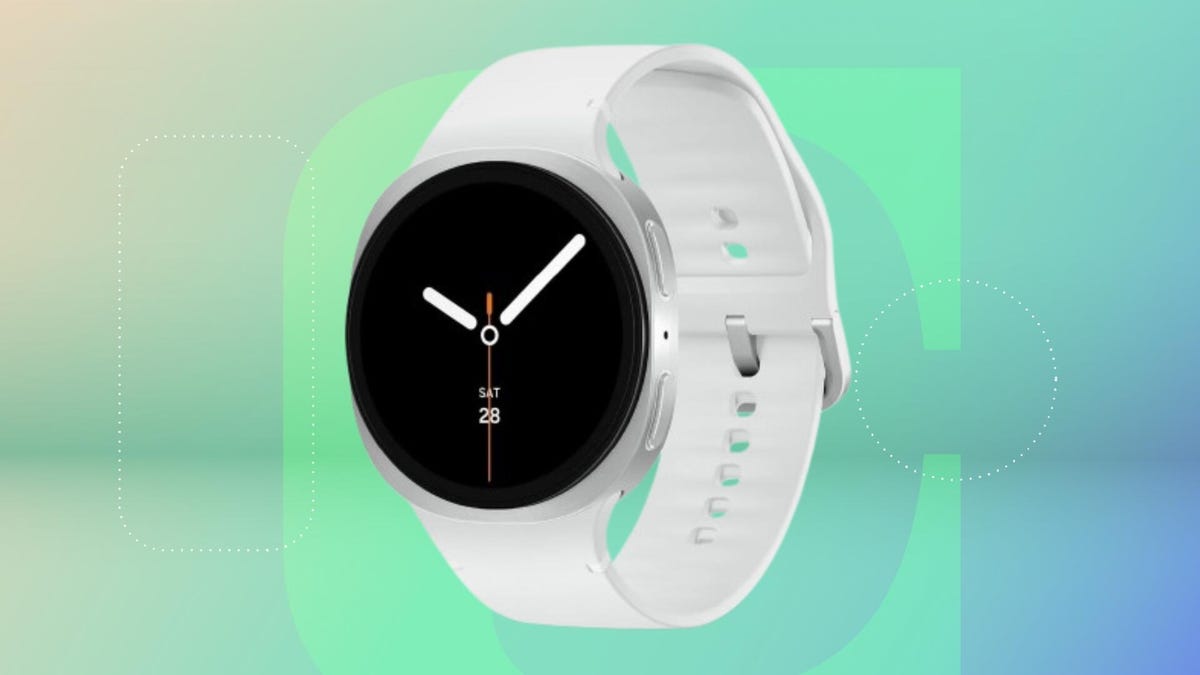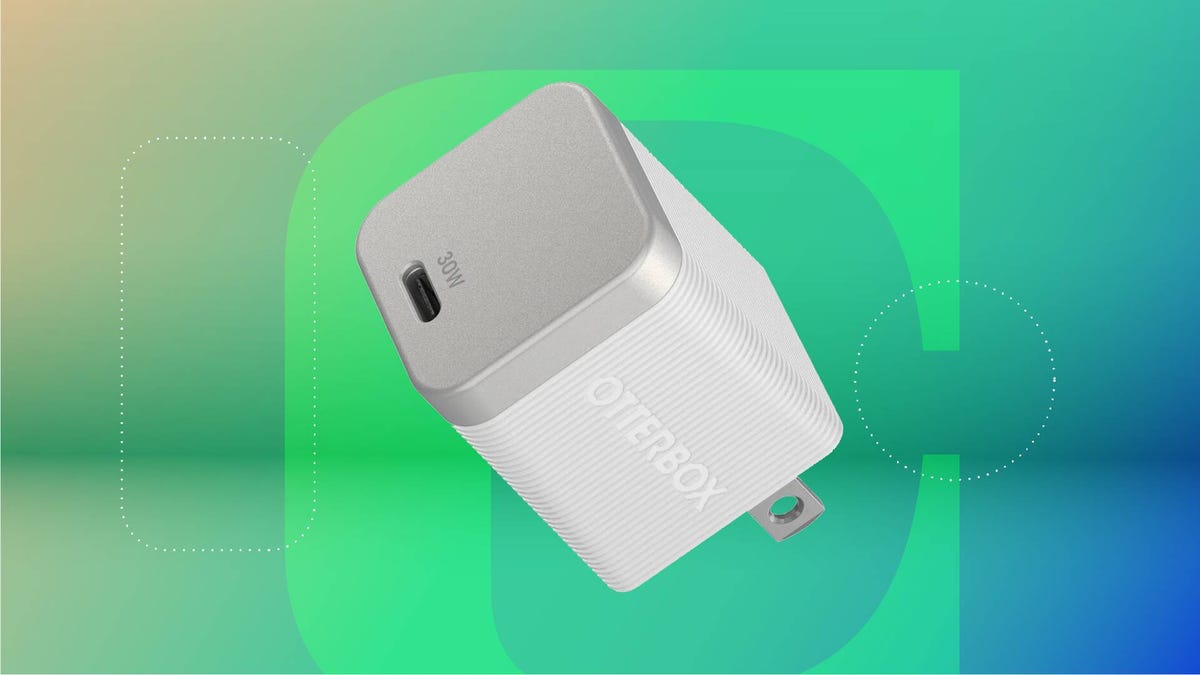Technologies
Major Energy Breakthrough: Milestone Achieved in US Fusion Experiment
For the first time, the National Ignition Facility officially achieved ignition in a fusion reactor.

It was touted as a «major scientific breakthrough» and, it seems, the rumors were true: On Tuesday, scientists at Lawrence Livermore National Laboratory announced that they have, for the first time, achieved net energy gain in a controlled fusion experiment.
«We have taken the first tentative steps toward a clean energy source that could revolutionize the world,» Jill Hruby, administrator of the National Nuclear Security Administration, said in a press conference Tuesday.
The triumph comes courtesy of the National Ignition Facility at LLNL in San Francisco. This facility has long tried to master nuclear fusion — a process that powers the sun and other stars — in an effort to harness the massive amounts of energy released during the reaction because, as Hruby points out, all that energy is «clean» energy.
Despite decades of effort, however, there had been a major kink in these fusion experiments: the amount of energy used to achieve fusion has far outweighed the energy coming out. As part of the NIF mission, scientists had long hoped to achieve «ignition,» where the energy output is «greater than or equal to laser drive energy.»
Some experts have remained skeptical that such a feat was even possible with fusion reactors currently in operation. But slowly, NIF pushed forward. In August last year, LLNL revealed it had come close to this threshold by generating around 1.3 megajoules (a measure of energy) against a laser drive using 1.9 megajoules.
But on Dec. 5, LLNL’s scientists say, they managed to cross the threshold.
They achieved ignition.
All in all, this achievement is cause for celebration. It’s the culmination of decades of scientific research and incremental progress. It’s a critical, albeit small, step forward, to demonstrate that this type of reactor can, in fact, generate energy.
«Reaching ignition in a controlled fusion experiment is an achievement that has come after more than 60 years of global research, development, engineering and experimentation,» Hruby said.
«It’s a scientific milestone,» Arati Prabhakar, policy director for the White House Office of Science and Technology, said during the conference, «but it’s also an engineering marvel.»
Still, a fully operational platform, connected to the grid and used to power homes and businesses, likely remains a few decades away.
«This is one igniting capsule at one time,» Kim Budil, director of LLNL, said. «To realize commercial fusion energy you have to do many things. You have to be able to produce many, many fusion ignition events per minute, and you have to have a robust system of drivers to enable that.»
So how did we get here? And what does the future hold for fusion energy?
Simulating stars
The underlying physics of nuclear fusion has been well understood for almost a century.
Fusion is a reaction between the nuclei of atoms that occurs under extreme conditions, like those present in stars. The sun, for instance, is about 75% hydrogen and, because of the all-encompassing heat and pressure at its core, these hydrogen atoms are squeezed together, fusing to form helium atoms.
If atoms had feelings, it would be easy to say they don’t particularly like being squished together. It takes a lot of energy to do so. Stars are fusion powerhouses; their gravity creates the perfect conditions for a self-sustaining fusion reaction and they keep burning until all their fuel — those atoms — are used up.
This idea forms the basis of fusion reactors.
Building a unit that can artificially re-create the conditions within the sun would allow for an extremely green source of energy. Fusion doesn’t directly produce greenhouse gases, like carbon dioxide and methane, which contribute to global warming.
And critically, a fusion reactor also doesn’t have the downsides of nuclear fission, the splitting of atoms used in nuclear bombs and reactors today.
In other words, a fusion power plant wouldn’t produce the radioactive waste associated with nuclear fission.
The big fusion experiment
The NIF, which takes up the space of around three football fields at LLNL, is the most powerful «inertial confinement fusion» experiment in the world.
In the center of the chamber lies a target: a «hohlraum,» or cylinder-shaped device that houses a tiny capsule. The capsule, about as big as a peppercorn, is filled with isotopes of hydrogen, deuterium and tritium, or D-T fuel, for short. The NIF focuses all 192 lasers at the target, creating extreme heat that produces plasma and kicks off an implosion. As a result, the D-T fuel is subject to extreme temperatures and pressures, fusing the hydrogen isotopes into helium — and a consequence of the reaction is a ton of extra energy and the release of neutrons.
You can think of this experiment as briefly simulating the conditions of a star.
The complicated part, though, is that the reaction also requires a ton of energy to start. Powering the entire laser system used by the NIF requires more than 400 megajoules — but only a small percentage actually hits the hohlraum with each firing of the beams. Previously, the NIF had been able to pretty consistently hit the target with around 2 megajoules from its lasers.
But on Dec. 5, during one run, something changed.
«Last week, for the first time, they designed this experiment so that the fusion fuel stayed hot enough, dense enough and round enough for long enough that it ignited,» Marv Adams, deputy administrator at the NNSA, said during the conference. «And it produced more energy than the lasers had deposited.»
More specifically, scientists at NIF kickstarted a fusion reaction using about 2 megajoules of energy to power the lasers and were able to get about 3 megajoules out. Based on the definition of ignition used by NIF, the benchmark has been passed during this one short pulse.
You might also see that energy gain in a fusion reaction is denoted by a variable, Q.
Like ignition, the Q value can refer to different things for different experiments. But here, it’s referring to the energy input from the lasers versus the energy output from the capsule. If Q = 1, scientists say they have achieved «breakeven,» where energy in equals energy out.
The Q value for this run, for context, was around 1.5.
In the grand scheme of things, the energy created with this Q value is only about enough to boil water in a kettle.
«The calculation of energy gain only considers the energy that hit the target, and not the [very large] energy consumption that goes into supporting the infrastructure,» said Patrick Burr, a nuclear engineer at the University of New South Wales.
The NIF is not the only facility chasing fusion — and inertial confinement is not the only way to kickstart the process. «The more common approach is magnetically confined fusion,» said Richard Garrett, senior advisor on strategic projects at the Australian Nuclear Science and Technology Organization. These reactors use magnetic fields to control the fusion reaction in a gas, typically in a giant, hollow donut reactor known as a tokamak.
Those devices have a much lower density than NIF’s pellets, so temperatures need to be increased to well over 100 million degrees. Garrett said he does not expect the NIF result to accelerate tokamak fusion programs because, fundamentally, the two processes work quite differently.
However, significant progress is also being made with magnetically confined fusion. For instance, the ITER experiment, under construction in France, uses a tokamak and is expected to begin testing in the next decade. It has lofty goals, aiming to achieve a Q greater than 10 and to develop commercial fusion by 2050.
The future of fusion
The experiment at NIF might be transformative for research, but it won’t immediately translate to a fusion energy revolution. This isn’t a power-generating experiment. It’s a proof of concept.
This is a point worth paying attention to today, especially as fusion has often been touted as a way to combat the climate crisis and reduce reliance on fossil fuels or as a salve for the world’s energy problems. Construction and utilization of fusion energy to power homes and businesses is still a ways off — decades, conservatively — and inherently reliant on technological improvements and investment in alternative energy sources.
Generating around 2.5 megajoules of energy when the total input from the laser system is well above 400 megajoules is, of course, not efficient. And in the case of the NIF experiment, it was one short pulse.
Looking further ahead, constant, reliable, long pulses will be required if this is to become sustainable enough to power kettles, homes or entire cities.
«It’s unlikely that fusion power … will save us from climate change,» said Ken Baldwin, a physicist at the Australian National University. If we are to prevent the largest increases in global average temperature, fusion power is likely going to be a little too late.
Other investment is going to come from private companies, which are seeking to operate tokamak fusion reactors in the next few years. For instance, Tokamak Energy in the UK is building a spherical tokamak reactor and seeks to hit breakeven by the middle of this decade.
Then there’s Commonwealth Fusion Systems, spun out of MIT, which is hoping to generate around 400 megawatts of power, enough for tens of thousands of homes, by the 2030s. Modern nuclear power plants can produce almost three times as much.
And as CNET editor Stephen Shankland noted in a recent piece, fusion reactors will also need to compete against solar and wind power — so even with today’s revelatory findings, fusion energy remains entrenched in the experimental phase of its existence.
But we can now cast one eye toward the future.
It may not prevent the worst of climate change but, harnessed to its full potential, it could produce a near-limitless supply of energy for generations to come. It’s one thing to think about the future of energy on Earth and how it will be utilized, but our eyes may fall on horizons even further out — deep space travel could utilize fusion reactors that blast us well beyond the reaches of our sun’s gravity, the very thing that helped teach us about fusion reactions, and into interstellar space.
Perhaps then, we’d remember Dec. 5, 2022, as the first tiny step toward places we dared once only dream about.
Correction, 8:44 a.m. PT: This article initially misstated the amount of energy in the fusion reaction. NIF powered the lasers with about 2 megajoules and produced 3 megajoules as a result.
Technologies
Sorry, Spotify Wrapped. My Listening Age Is Not What You Think It Is
Commentary: I may be old in Spotify’s eyes, but I got to see Prince live in Minneapolis in the 1980s, so I can live with that.

Spotify Wrapped is a fun annual roundup of your listening habits. Every year, the music streaming app adds new features, like back in 2023, when it assigned people a Sound Town, meaning a city that supposedly matched their listening style. The Spotify Wrapped for 2025 just landed on Wednesday, and new features this year include a multiplayer game called Wrapped Party and an in-your-face assessment of your listening age.
That last one blew my mind a little. My actual age is 57. According to Spotify, my listening age is 79.
SEVENTY-NINE.
Don’t miss any of our unbiased tech content and lab-based reviews. Add CNET as a preferred Google source.
President Donald Trump and former Presidents Bill Clinton and George W. Bush are 79. Liza Minnelli is 79. Cher — well, she’s ageless, but technically, she’s 79.
Look, I’m no teenybopper, I get it. I’m a proud Atari Wave Gen Xer. So it’s not like I was 18 and was then told I was listening to AARP tunes. But does Spotify realize how it sounds to be hit with a listening age that’s 22 years older than I really am?
What’s my age again?
I’m not the only one Spotify is aging up. My 18-year-old daughter was told she was 37, maybe because of her love of 1990s emo. Some people get aged down — my colleague Corinne Reichert’s 73-year-old mom was labeled 21. («She listens to a lot of K-pop,» her daughter says.)
Spotify pegged my colleague Jon Skillings as an octogenarian, with a listening age of 86, «since you were into music from the late ’50s.» Blame that on his passion for jazz and a healthy dose of Miles Davis and Duke Ellington in his sonic excursions. At least Spotify had the good taste to play Count Basie’s 1957 version of April in Paris when it delivered the news.
«I won’t lie. That 86 did sting a little,» Skillings says. «I really thought I was mixing in a lot more tunes from this century.»
For the record, Spotify did flag a 2024 release from the contemporary jazz pianist Vijay Iyer as his top album. «See?» he says. «I can keep up with the times.»
But Skillings looks like a spring chicken next to CNET’s Ty Pendlebury, who wrote our main Spotify Wrapped article and revealed that Spotify bluntly told him he was 100.
I may be old, but I got to see all the cool bands
I know 79 isn’t old to many people. I lost my sister Claudia last December at 78, and her ghost will haunt me forever if I get snippy about an age she never even got the chance to complain about. But there’s something jolting about seeing an age that’s 22 years older than you are, especially relating to music, where the industry is always riding on the back of some hot new young singer.
Do I really care? Maybe I shouldn’t. There’s a T-shirt that says something like, «I may be old, but I got to see all the cool bands.» It’s probably made for Baby Boomers, but as an Xer who saw Prince live in his hometown of Minneapolis in his best decade, the 1980s, I proudly identify with that remark.
I’ve seen some oldsters in concert, yeah, can’t deny it. A couple of years ago, I saw Steely Dan at an outdoor amphitheater near Seattle. (No static at all.) I saw folk legend Pete Seeger perform with Arlo Guthrie at the University of Minnesota one year. My mom, born in the 1920s, and my brother, a 1944-born baby, were with me, and we were all rapt. There were kids bouncing on their parents’ laps at that show. Pete and Arlo’s music knew no age. And as an 1980s concert-goer, I’ve seen bands like The Pet Shop Boys, REM, U2, Redd Kross, The Church, and the Pixies.
But as mom of a teenage daughter, I’ve also been flooded with more modern music, and I love it, too. Thanks to her, I’ve seen Panic! at the Disco, Alex G, Car Seat Headrest, Melanie Martinez and Slaughter Beach, Dog. And my daughter isn’t easy to categorize, either. She’s in an emo groove these days, listening to music from before she was born, and saw My Chemical Romance kick off their Long Live The Black Parade tour, where they performed their 2006 album The Black Parade in its entirety.
How does Spotify determine your listening age?
Spotify claims my listening age is 79, not because I sit around watching Lawrence Welk Show reruns, but because I «was into music from the early ’60s.»
I think my Spotify musical age has a lot to do with me watching the recent Bob Dylan biopic A Complete Unknown and suddenly deciding Spotify was the perfect way to catch up on Dylan’s music. I was just a little too early for his heyday, although I lived just off the famous Highway 61, where God said to Abraham, kill me a son. OK, so I saw the movie, and I mainlined me some Dylan on Spotify.
So why not hand me a decade instead of an age? I was born in the ’60s, so dubbing me a ’60s baby would be just fine by me. (My birth year is 6-7, which should be a popular year with Gen Z and Alpha.) I grew into my musical tastes in Minneapolis in the 1980s, with Prince, The Replacements, Husker Du and The Suburbs, so call me an ’80s child and I will put that sucker on a T-shirt and flaunt it.
I’ve decided I’m going to wear my Spotify age proudly. Nobody should be shoved into a musical pigeonhole; there are great tunes from every decade, if you’re open enough to listen, and an 80-year-old can listen to whoever they choose. I’m proud that my musical tastes aren’t narrowly defined by my birth year, but instead, are open and vast.
So you’ll excuse me if I look at Spotify calling me 79 and quote an iconic song from those Gen X gurus, Nirvana:
Oh well, whatever, never mind.
Technologies
Snag the Samsung Galaxy Watch 8 LTE for Just $270 Before Time Runs Out
The 44mm LTE model is discounted to a new low, offering premium features without the premium price.

The big holiday sales event may be over, but this Samsung Galaxy Watch 8 deal is here to put other smartwatch offers to shame. Last week’s sales saw the 40mm Galaxy Watch 8 model sell for $250 (that price is still live, too). But this deal laughs in its face and instead sells the larger 44mm configuration with LTE connectivity for just $270.
This deal is available in a single color, so you’ll need to like the silver finish. You also need to make sure that you place your order soon, because this deal ends in a couple of days or sooner if stock runs out.
The Galaxy Watch 8’s larger size makes it ideal for those with bigger wrists or anyone who prefers a larger display. LTE support means you can use it without your phone, perfect for runs or other activities where carrying a device isn’t convenient.
Don’t miss any of our unbiased tech content and lab-based reviews. Add CNET as a preferred Google source.
Alongside the phone-free connectivity, this model also includes sleep tracking and activity monitoring despite its thin and light design. It lasts a full day on a single charge, so you won’t need to carry your charger everywhere.
Note that Woot only offers this smartwatch with its own 90-day limited warranty, something that might put some buyers off. If you’d rather have a more traditional Samsung two-year warranty the same watch is available at Amazon for a premium price of $330. That’s $100 off the regular price but the price will only last for a few more hours at the time of writing.
SMARTWATCH DEALS OF THE WEEK
-
$359 (save $70)
-
$250 (save $100)
-
$300 (save $50)
-
$150 (save $100)
-
$120 (save $80)
Why this deal matters
A smartwatch isn’t just about telling time, it opens up a world of data tracking possibilities. Whether it’s sleep, workouts or daily activity, this smartwatch can handle it all. And with LTE included, it’s a no‑brainer for anyone who wants phone‑free connectivity. It might even be the perfect Christmas gift for the fitness fiend in your life, too.
Technologies
Get USB-C Chargers for the Whole Family From Just $4 Apiece
Woot is offering up to 89% off Otterbox charger multipacks right now, so you can grab one for everyone on your list.

Between your phone, tablet, headphones, smartwatch and other gadgets, you can never have too many chargers around the house. Especially not when you can grab extras for just $4 apiece. These Otterbox 30-watt USB‑C wall adapters make perfect stocking stuffers, and Woot is offering up to 89% off value packs right now. Just be sure to get your order in before these deals expire on Dec. 5 or when sold out.
Prices start at just $12 for a pair (83% off). You can also grab a three‑pack for $16, a five‑pack for $23, or a 10‑pack for $40 total, the best value at just $4 each.
Each adapter has a single USB‑C port that supports 30-watt fast charging for phones and more. It’s equipped with Programmable Power Supply technology for variable voltage charging and improved safety. Plus, it weighs only 50 grams and has foldable prongs, making it a great option for frequent travelers.
Why this deal matters
Whether you’re shopping for yourself or picking up holiday stocking stuffers, these Otterbox 30-watt wall adapters are a steal at just $4 apiece. Compact, efficient and versatile, they’re ideal for phones, tablets, earbuds and more.
-

 Technologies3 года ago
Technologies3 года agoTech Companies Need to Be Held Accountable for Security, Experts Say
-

 Technologies3 года ago
Technologies3 года agoBest Handheld Game Console in 2023
-

 Technologies3 года ago
Technologies3 года agoTighten Up Your VR Game With the Best Head Straps for Quest 2
-

 Technologies4 года ago
Technologies4 года agoBlack Friday 2021: The best deals on TVs, headphones, kitchenware, and more
-

 Technologies4 года ago
Technologies4 года agoVerum, Wickr and Threema: next generation secured messengers
-

 Technologies4 года ago
Technologies4 года agoGoogle to require vaccinations as Silicon Valley rethinks return-to-office policies
-

 Technologies4 года ago
Technologies4 года agoOlivia Harlan Dekker for Verum Messenger
-

 Technologies4 года ago
Technologies4 года agoiPhone 13 event: How to watch Apple’s big announcement tomorrow
